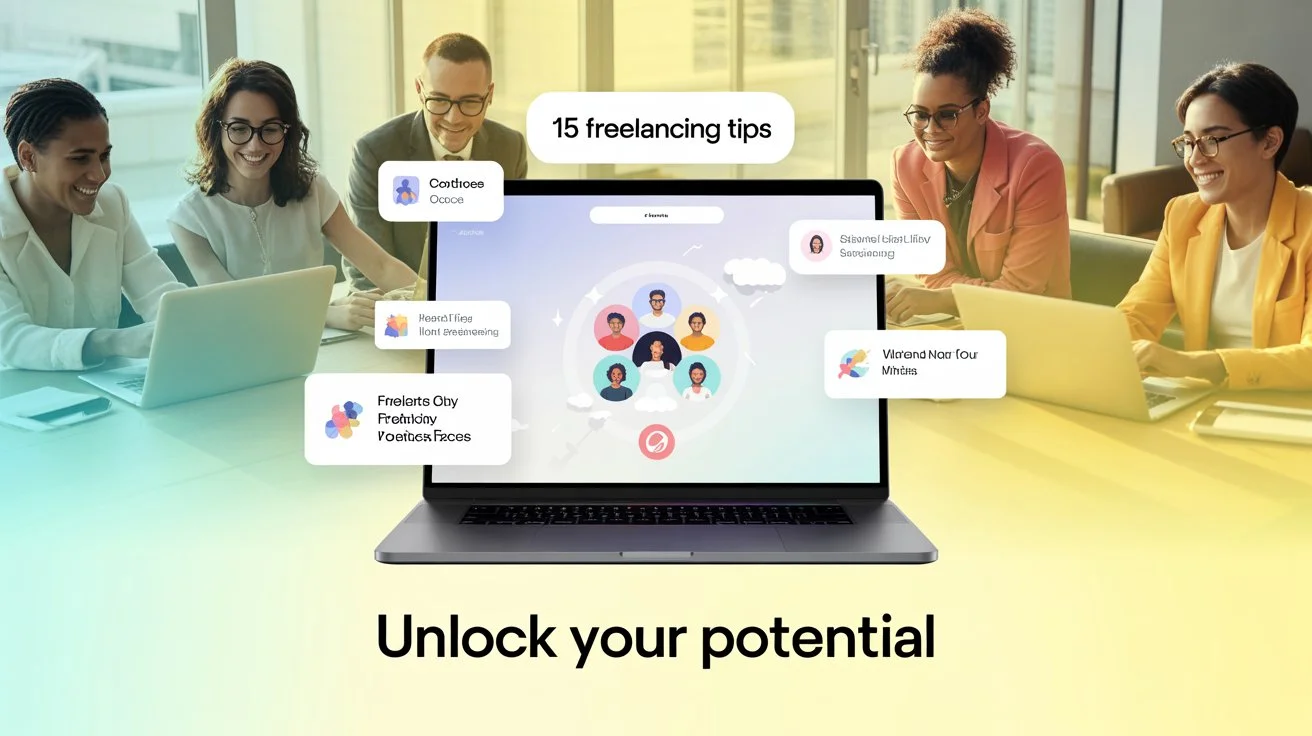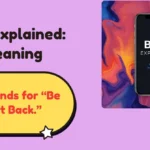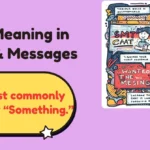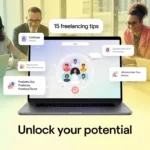Freelancing has evolved from a side hustle into a full-time career for millions of professionals around the world. Whether you’re a graphic designer, content writer, developer, or digital marketer, freelancing offers freedom, flexibility, and control — but it also brings challenges like inconsistent income, demanding clients, and burnout.
The truth is: successful freelancing isn’t about luck. It’s about strategy, discipline, and mindset.
This guide dives deep into 15 proven freelancing tips that help you attract clients, grow your income, and build a business that lasts. Each section includes practical steps, tools, and examples you can apply today.
Define Your Freelance Niche and Target Audience
A freelancer who tries to do everything often ends up doing nothing well. Choosing a specific niche gives you clarity and helps clients instantly understand your value.
Why niche down?
- Clients prefer specialists over generalists.
- You can charge higher rates.
- Your marketing becomes simpler and more targeted.
Examples of profitable niches in 2025:
- AI Content Creation & Prompt Engineering
- UX/UI Design for SaaS Startups
- E-commerce Copywriting
- Data Visualization & Automation
- Social Media Strategy for Coaches
Exercise:
Write a one-line niche statement:
“I help [target clients] achieve [specific result] through [your skill/service].”
For example:
“I help small e-commerce stores boost conversions with engaging product descriptions.”
Once you have clarity, build everything — your website, portfolio, and social presence — around that niche.
Build a Personal Brand That Speaks for You
In freelancing, your brand is your resume. It’s how potential clients perceive your expertise before even speaking with you.
Ways to build your brand:
- Choose a consistent tone and color palette for your website and social media.
- Showcase case studies and testimonials prominently.
- Share your knowledge through blogs, videos, or short LinkedIn posts.
“A strong personal brand doesn’t shout; it shows.”
You don’t need a fancy logo — authenticity and consistency go further. Make sure your profile photo, bio, and portfolio align with your desired image.
Expand Beyond Local Markets
Gone are the days when freelancers relied only on local businesses. The internet has made it possible to work with clients anywhere in the world.
How to find international clients:
- Create professional profiles on Upwork, Toptal, and Fiverr Pro.
- Use LinkedIn Services to attract global leads.
- Join Facebook groups or Slack channels for remote professionals.
Pro tip: Showcase testimonials from clients in different countries to build global credibility.
Case Study:
A content writer from Texas began pitching to SaaS startups in Europe through LinkedIn. Within six months, she tripled her income and started working exclusively with international clients — all because she stopped limiting herself to local outreach.
Turn One-Time Clients Into Repeat Clients
Acquiring a new client costs more effort than keeping an existing one. The smartest freelancers focus on long-term relationships.
How to do that:
- Offer retainer packages (e.g., monthly design support or content updates).
- Send follow-up emails after project delivery.
- Remember client milestones — birthdays, company anniversaries, etc.
Tools to manage client relationships:
| Purpose | Tool | Key Benefit |
|---|---|---|
| CRM | Notion / HubSpot | Keep track of all clients in one place |
| Invoicing | FreshBooks / Wave | Easy billing and payments |
| Project Mgmt | Trello / ClickUp | Visual task organization |
A single loyal client can bring steady income for months — treat them like partners, not paychecks.
Document and Track Everything
If you want to succeed long-term, you need to treat freelancing like a business. That means documenting your finances, contracts, and projects.
Why it matters:
- Protects you legally.
- Simplifies tax filing.
- Gives you a clear view of profit and expenses.
Things to track:
- Invoices sent and paid.
- Contracts signed.
- Deadlines and milestones.
- Software subscriptions.
Keep backups of everything in cloud storage like Google Drive or Dropbox. A well-organized freelancer can focus on creativity instead of chaos.
Master Client Communication
Communication can make or break your freelance reputation. Clients value professionals who keep them updated and respond promptly.
Tips for great communication:
- Set clear expectations before starting.
- Provide regular progress updates.
- Use polite, professional language.
- Don’t disappear mid-project — always reply within 24 hours.
Example of a simple update message:
“Hey [Client Name], just wanted to share that I’ve completed the first draft of the design. Please review and let me know if any changes are needed. Looking forward to your feedback!”
Handle Rejection Like a Pro
Freelancing comes with rejections — but they’re not failures, they’re filters.
Every “no” brings you closer to the right client. Keep a “No → Learn” journal to note why a proposal didn’t work and how to improve next time.
Rejection tips:
- Don’t take it personally.
- Politely ask for feedback.
- Refine your proposal templates.
Remember: even the best freelancers lose gigs. What matters is how fast you bounce back.
Build a Consistent Sales Pipeline
Don’t wait for clients to find you — create your own flow of leads.
Ways to build your pipeline:
- Network weekly — comment, share, and connect on LinkedIn.
- Collect testimonials after each project.
- Keep an active email list of past clients.
3-step pipeline audit:
- Check how many leads you generated this month.
- Track conversion rate (pitches vs. projects won).
- Set next month’s outreach goal.
Building a strong pipeline gives you confidence and stability — no more dry months or desperation discounts.
Promote Your Skills Authentically
Clients love freelancers who educate instead of hard-selling.
How to promote naturally:
- Share insights about your process on social media.
- Post “before and after” project results.
- Create helpful threads or tutorials related to your skill.
Example: A web designer who shares “3 quick homepage fixes that double conversions” builds trust far faster than someone just shouting, “Hire me!”
Learn to Price for Value, Not Hours
Hourly rates limit your growth. Instead, charge based on value and outcomes.
How to do it:
- Estimate the impact of your work (e.g., “This sales page can bring $10K/month — my fee is $1,000”).
- Package your services (e.g., Logo + Brand Guide for $800).
- Include revisions and timelines clearly.
Example Pricing Evolution:
| Type | Approach | Typical Earnings |
|---|---|---|
| Hourly | $25/hour | Unpredictable income |
| Project-based | $500/project | More control |
| Value-based | $3,000/month retainer | Stable, scalable |
When you focus on value, clients respect your expertise — and pay for it.
Build a Supportive Freelance Community
Freelancing can feel lonely, but it doesn’t have to be. Joining a community keeps you motivated and connected.
Where to find one:
- Slack groups like “Freelance Chat” or “Superpath”.
- Discord servers for creators and developers.
- Reddit forums (r/freelance, r/digitalnomad).
Benefits of community:
- Get advice from people who understand your challenges.
- Exchange referrals.
- Collaborate on big projects.
“When freelancers collaborate instead of competing, everyone wins.”
Use Feedback as a Growth Tool
Feedback is fuel for improvement. Encourage clients to share their honest thoughts — both good and bad.
How to ask for feedback:
- Include a simple survey link after project completion.
- Ask: “What’s one thing I could have done better?”
- Listen without defending yourself.
Turn their insights into upgrades for your process or portfolio. Constructive criticism helps you grow faster than compliments ever will.
Balance Work and Mental Health
Freelancing gives freedom — but it can also blur boundaries between life and work.
Warning signs of burnout:
- Feeling drained even after rest.
- Losing motivation or creativity.
- Working 7 days a week without breaks.
Solutions:
- Set office hours (and stick to them).
- Take weekends off digital devices.
- Move your body — even short walks boost creativity.
Remember, your energy is your real currency. Protect it.
Keep Upgrading Your Skills
The freelance world changes quickly. New tools, algorithms, and trends appear every few months.
Affordable learning platforms:
- Coursera
- Skillshare
- LinkedIn Learning
Plan:
- Dedicate one hour a week to learn.
- Apply new knowledge to real projects.
- Showcase skill growth in your portfolio updates.
Fact: Freelancers who continuously learn earn up to 40% more than those who don’t.
Treat Freelancing Like a Business, Not a Gig
You’re not just working in your business — you’re running it.
Business mindset essentials:
- Register your business legally if required.
- Separate personal and business accounts.
- Track quarterly goals for income, marketing, and skills.
- Plan taxes early — don’t wait for year-end panic.
When you approach freelancing as a business, you gain control, stability, and respect from clients.
Additional Resources for Freelancers
| Resource | Link | Focus |
|---|---|---|
| Freelancers Union | freelancersunion.org | Legal & tax help |
| Upwork Blog | upwork.com/resources | Career advice |
| Millo | millo.co | Marketing & productivity |
| The Freelance Hustle | thefreelancehustle.com | Community & business tips |
These platforms share valuable insights to keep you updated and supported throughout your freelance journey.
FAQs
What’s the best freelancing tip for beginners?
Start small, but stay consistent. Pick one skill, build a portfolio, and focus on delivering exceptional results for your first few clients.
How do freelancers find clients fast?
Use platforms like Upwork and LinkedIn. Also, ask for referrals from past employers or peers — personal recommendations convert best.
How much can freelancers earn in 2025?
Depending on skill and niche, freelancers can earn anywhere from $30,000 to $120,000 annually. High-demand fields like AI design and copywriting offer even more.
What are the most common freelancer mistakes?
Underpricing, poor communication, and skipping contracts. Always value your time, set expectations, and document every deal.
How can I stay motivated as a freelancer?
Join supportive communities, set monthly goals, and celebrate small wins. Remember why you started — freedom and creative control.
Conclusion
Freelancing is more than working from home — it’s building a business on your own terms. With these 15 freelancing tips, you can attract better clients, increase your income, and enjoy the lifestyle you imagined when you first started.
Every step — from niche selection to communication and pricing — shapes your professional future. Stay curious, stay consistent, and most of all, stay confident.
“Your next big client is just one email — and one bold move — away.”











